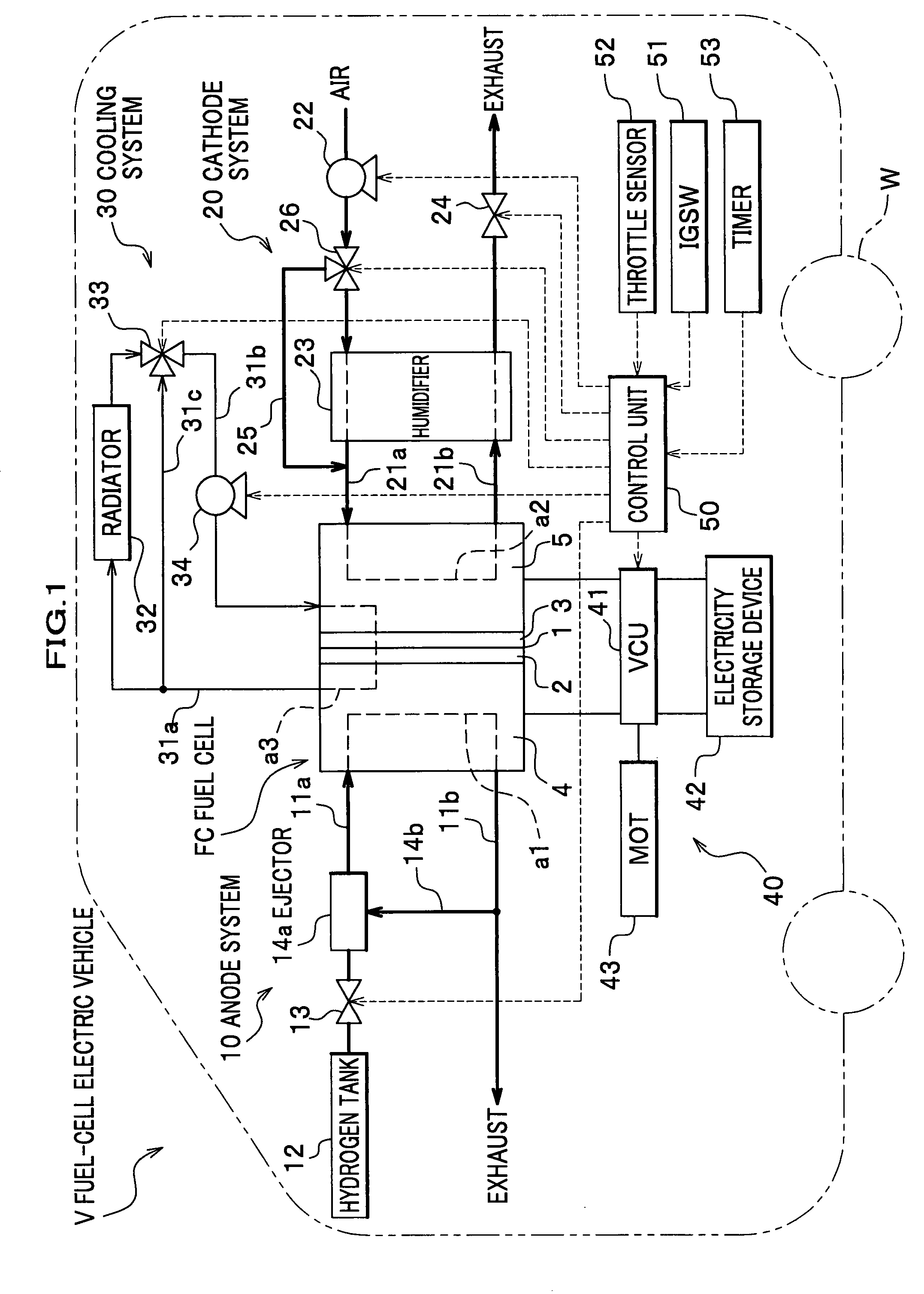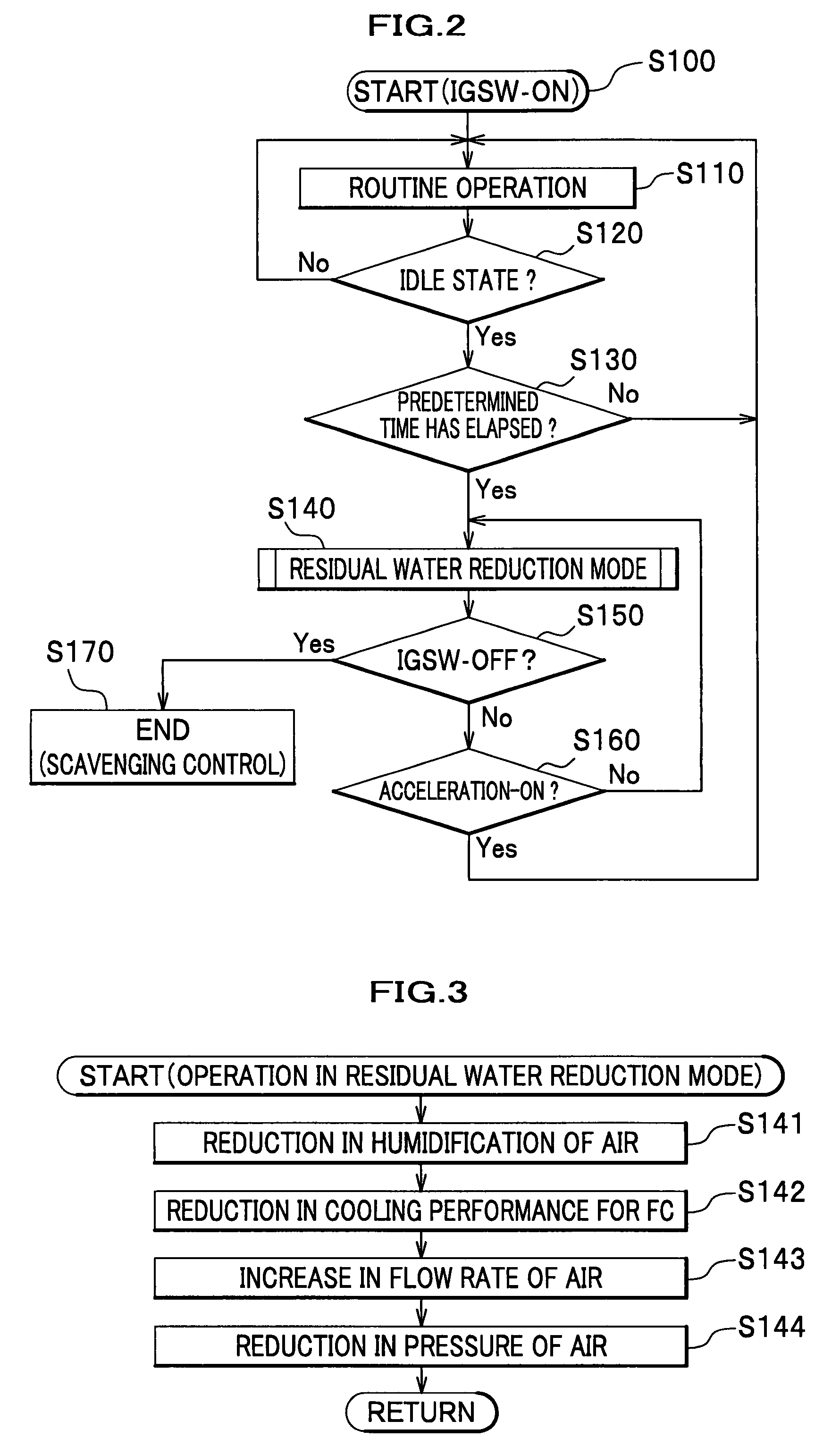Fuel-cell electric vehicle
a fuel cell and electric vehicle technology, applied in battery/fuel cell control arrangement, electrochemical generators, transportation and packaging, etc., can solve the problems of increasing the size of the power source, increasing the volume flow rate of the reactant gas as well as the flow velocity, and increasing the amount of residual water removed from inside the fuel cell. , to achieve the effect of increasing the volume flow rate of the reactant gas and the flow velocity, increasing the efficiency of electric power generation, and reducing the amount of residual water
- Summary
- Abstract
- Description
- Claims
- Application Information
AI Technical Summary
Benefits of technology
Problems solved by technology
Method used
Image
Examples
Embodiment Construction
[0027]As shown in FIG. 1, a fuel-cell electric vehicle V according to one exemplary embodiment of the present invention includes a fuel cell FC, an anode system 10, a cathode system 20, a cooling system 30, a high-voltage system 40, a control unit 50, and various other components.
[0028]The fuel cell FC is provided as a fuel cell stack consisting of unit cells. Each unit cell is comprised of a solid polymer electrolyte membrane (hereinafter referred to simply as “electrolyte membrane”) 1, an anode 2, a cathode 3 and two separators 4, 5. The electrolyte membrane 1 has proton conductivity. The anode 2 is provided at one side of the electrolyte membrane 1 and the cathode 3 is provided at the other side of the electrolyte membrane 1; the electrolyte membrane 1 thus sandwiched between the anode 2 and the cathode 3 forms a membrane electrode assembly (MEA). On both sides of the MEA are provided the separators 4, 5, which not only serve to separate unit cells but also serve as manifolds to ...
PUM
| Property | Measurement | Unit |
|---|---|---|
| humidity | aaaaa | aaaaa |
| flow rate | aaaaa | aaaaa |
| pressure | aaaaa | aaaaa |
Abstract
Description
Claims
Application Information
 Login to View More
Login to View More - R&D
- Intellectual Property
- Life Sciences
- Materials
- Tech Scout
- Unparalleled Data Quality
- Higher Quality Content
- 60% Fewer Hallucinations
Browse by: Latest US Patents, China's latest patents, Technical Efficacy Thesaurus, Application Domain, Technology Topic, Popular Technical Reports.
© 2025 PatSnap. All rights reserved.Legal|Privacy policy|Modern Slavery Act Transparency Statement|Sitemap|About US| Contact US: help@patsnap.com



